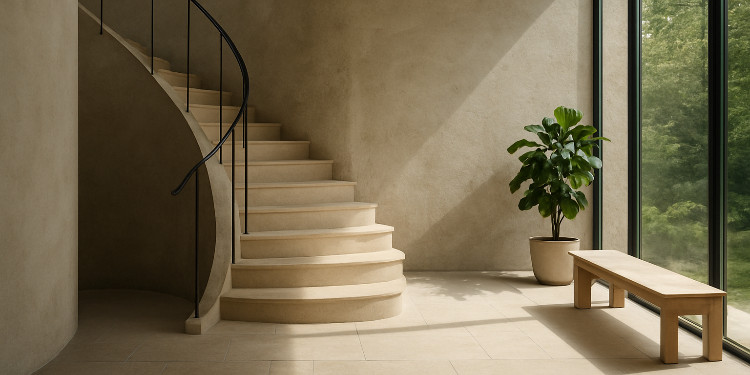When you step into a beautifully designed building, there’s often a sense of wonder. The height of the ceilings, the way sunlight filters through the windows, the texture of the walls, or even the curve of a staircase — all of it works together to create an experience. Architecture is more than just construction; it’s storytelling through space. It tells us who we are as a society, what we value, and how we want to live.
Yet, behind every story carved in steel, glass, or stone, there’s another layer most people rarely notice. Buildings don’t just appear because someone had a brilliant idea. They exist because teams of professionals ensured that those ideas could actually take shape.
The Emotional Power of Architecture
Architecture shapes our emotions more than we realize. Think of the calm you feel walking into a minimalist, open space flooded with natural light. Contrast that with the cozy intimacy of a small café tucked into a narrow street, where the design invites closeness and conversation. Buildings influence how we interact with each other and how we experience daily life.
Great architecture inspires. The Eiffel Tower in Paris isn’t just iron beams arranged vertically; it’s a symbol of innovation and French pride. The Taj Mahal isn’t only white marble carved into a dome; it’s a physical embodiment of love and devotion. These structures carry stories that transcend generations.
But inspiration doesn’t come by accident. For every design that takes our breath away, there’s an intricate balance between beauty and functionality. That balance requires a process that ensures creative visions can realistically be brought to life — a process known as construction estimation. Without it, even the most striking designs risk remaining ideas instead of becoming real, tangible spaces.
Why Precision is the Unsung Hero of Building
It’s easy to admire the glamorous side of architecture, but the truth is, no design — no matter how stunning — can survive without precision. Behind the curtain of creativity lies a world of numbers, details, and practical adjustments.
Imagine you’re planning to build your dream home. You envision tall windows, modern finishes, and a spacious open floor plan. Without proper planning, those details could lead to spiraling costs, unexpected delays, or even safety issues. Precision isn’t just a technical requirement; it’s a safeguard. It ensures that projects stay on track, budgets remain under control, and creativity doesn’t crumble under real-world challenges.
The Dance of Art and Science
Architecture has always been a marriage of art and science. The art side brings creativity, emotion, and cultural meaning. The science side ensures structures stand tall, safe, and sustainable. When both sides are in harmony, the results are extraordinary.
Take the Sydney Opera House, for example. Its sail-like design captures the imagination, but the structure required years of problem-solving and innovative engineering before it could actually be built. Similarly, the Burj Khalifa, the tallest building in the world, wouldn’t exist without cutting-edge science supporting its striking design.
This balance exists in every project, whether it’s a high-rise tower or a family’s first home. The harmony between creativity and practicality is what gives iconic structures their staying power.
How Buildings Reflect Culture and Community
Buildings aren’t just walls and roofs; they’re cultural mirrors. A traditional Japanese tea house reflects simplicity, balance, and a connection to nature. A Gothic cathedral in Europe speaks of faith, craftsmanship, and grandeur. A modern co-working space in New York highlights collaboration, flexibility, and the energy of urban life.
Architecture captures the spirit of its time. During the industrial revolution, brick factories symbolized progress. Today, eco-friendly buildings made with recycled materials and powered by renewable energy symbolize our growing awareness of sustainability.
Every building tells a story not only about its creators but about the society that demanded it.
The Rising Importance of Sustainability
Modern construction is no longer just about size and beauty. It’s about responsibility. The built environment accounts for a significant portion of global energy use and emissions, which means every project today has a chance to either add to the problem or contribute to the solution.
Green buildings, passive houses, and net-zero designs are becoming the standard in forward-thinking cities. These designs use renewable energy, smart materials, and efficient planning to minimize environmental impact. But again, these ambitious goals require careful preparation.
Building smarter means building for the future — for the generations who will inherit the spaces we create today.
Technology’s Role in Modern Construction
Technology has transformed how we plan, design, and build. Digital modeling, 3D visualization, and real-time collaboration tools have made it possible to predict challenges before they arise. Virtual reality can now let clients walk through their future homes or offices before a single brick is laid.
This shift doesn’t just make building faster; it makes it smarter. Problems that once caused months of delay can now be solved in minutes with advanced tools.
But no matter how advanced the tools become, one thing remains constant: human expertise. Technology is powerful, but it still requires skilled professionals who understand both the art of design and the science of building.
Building for People, Not Just Projects
Ultimately, the true purpose of construction is not the structure itself but the lives lived within it. A house isn’t just walls and a roof; it’s the backdrop for family dinners, celebrations, and everyday memories. An office isn’t just desks and windows; it’s where ideas are born and collaborations thrive.
Every project impacts real people — their comfort, safety, and happiness. That responsibility should drive us to go beyond technical accuracy and focus on the bigger picture: building spaces that improve lives.
Looking Ahead: A Future Full of Possibility
The future of architecture and construction is incredibly exciting. From smart cities powered by AI to sustainable homes that produce their own energy, innovation is redefining how we live and work. These changes are not just trends — they’re signals of a world where buildings become more than shelters; they become active participants in our lives.
As the industry evolves, the most successful projects will always be those where vision and precision meet. Because when creativity is supported by detail, the result is something extraordinary — a future built not just of steel and stone, but of hope, culture, and possibility.
Final Thoughts
Architecture is the art of shaping human experience. It blends culture, creativity, and community into spaces that define our lives. But none of it can exist without careful planning and the expertise to make ideas buildable.
That’s why the unseen efforts behind the scenes matter just as much as the visible beauty of a finished building. Because at the end of the day, buildings aren’t just about design. They’re about people. And every brick laid is a step toward a better, brighter future.










Yorum Bırakın